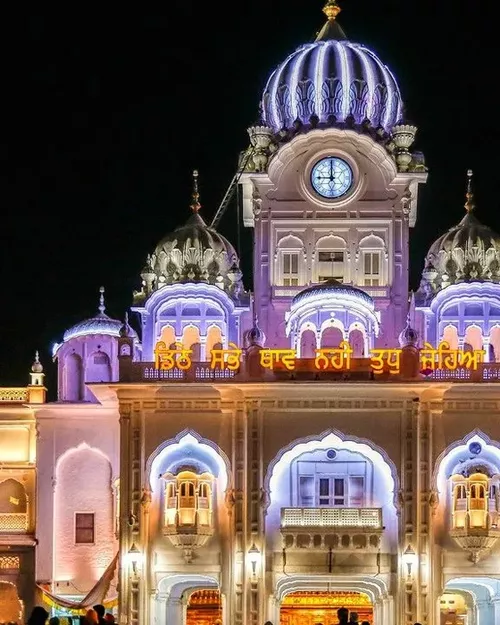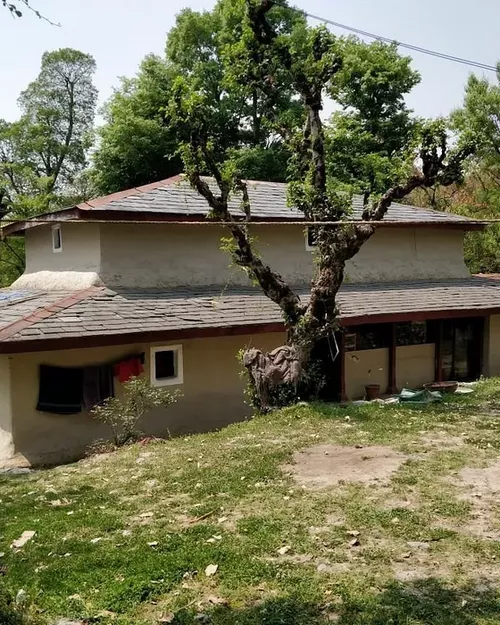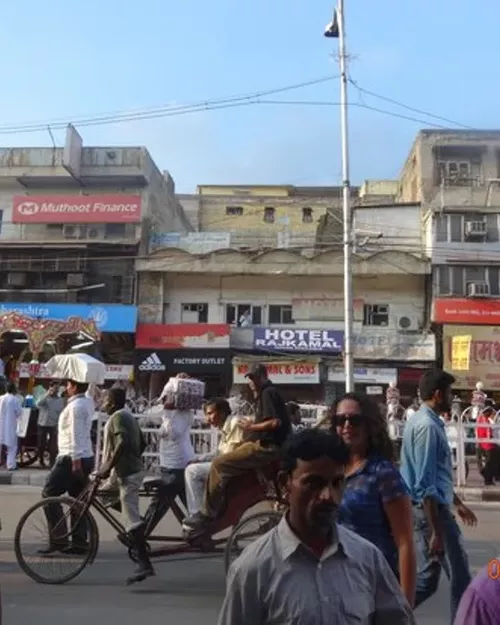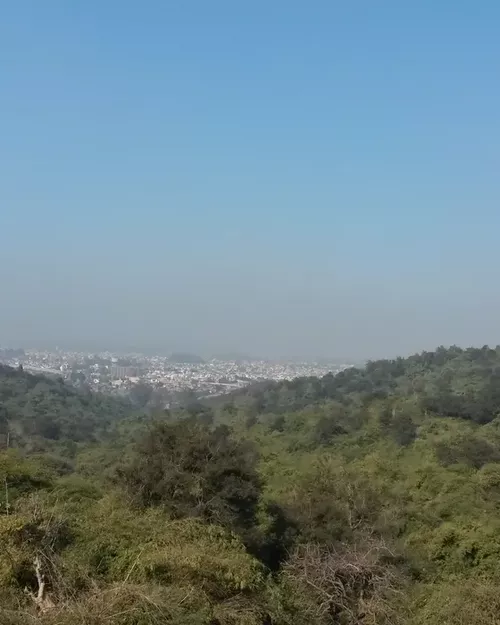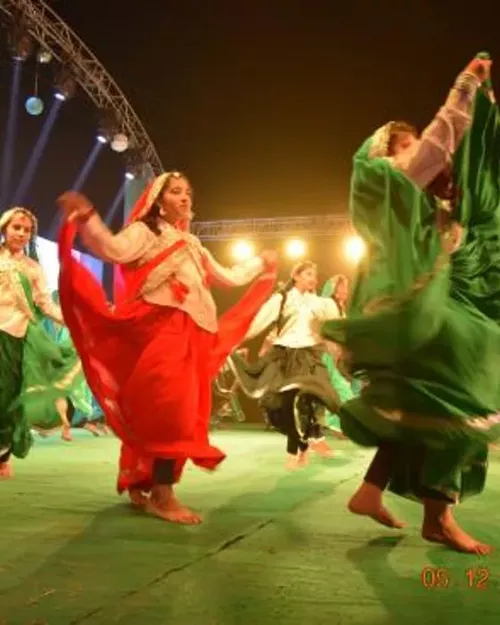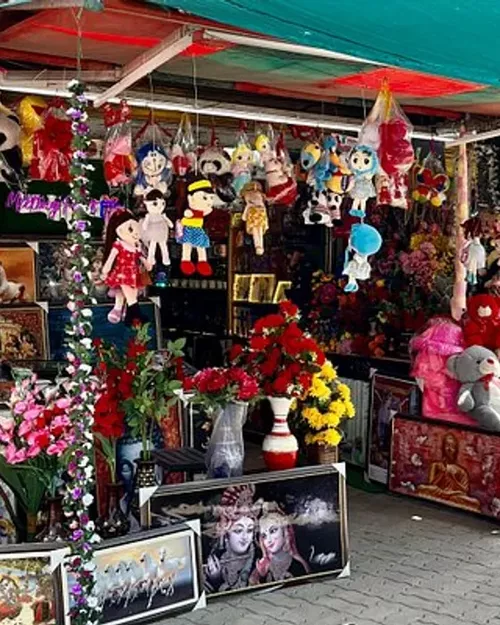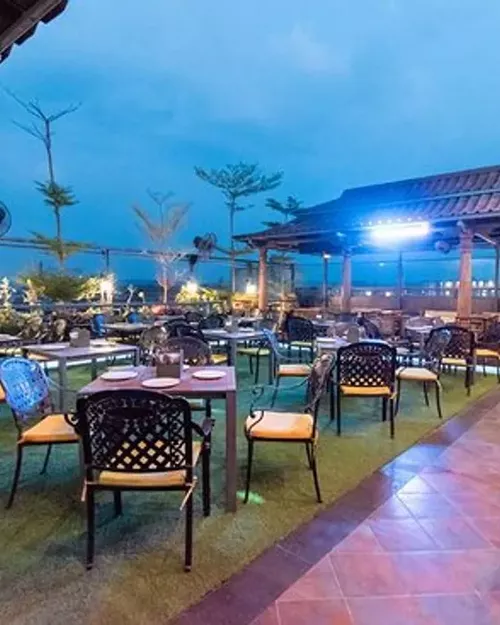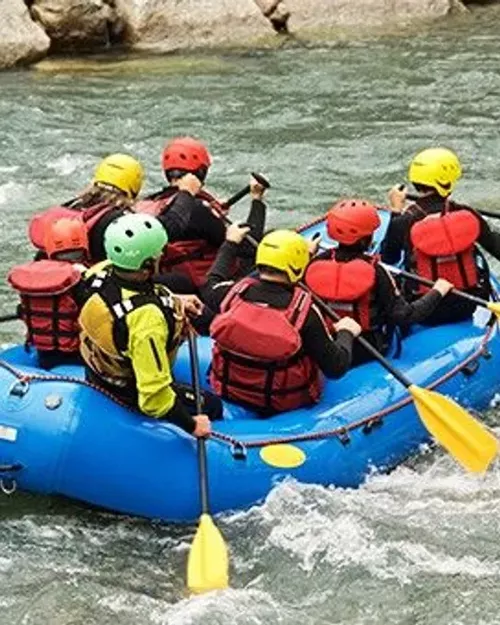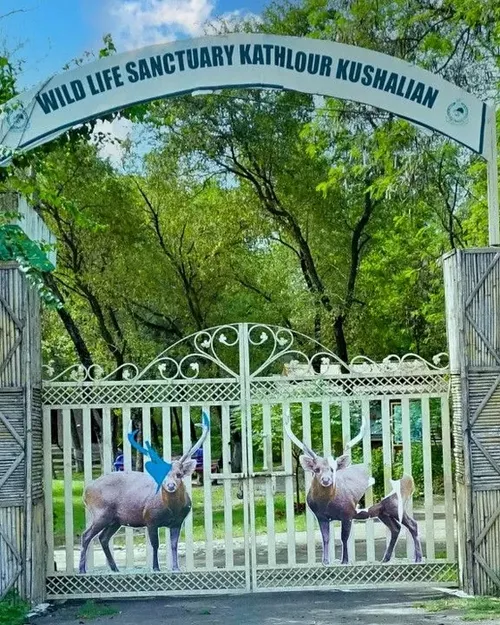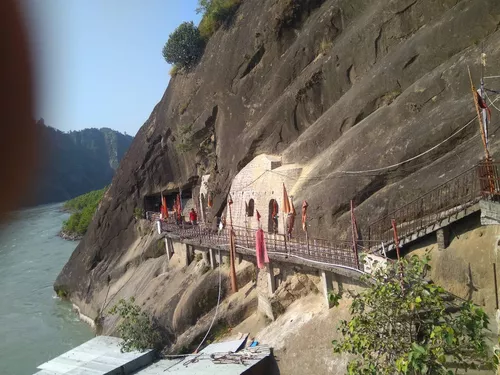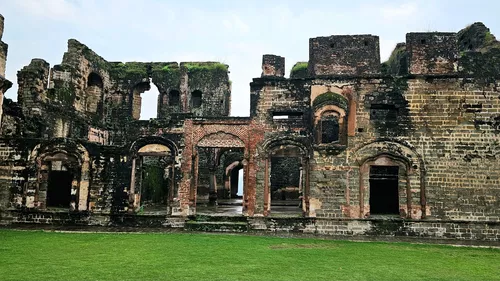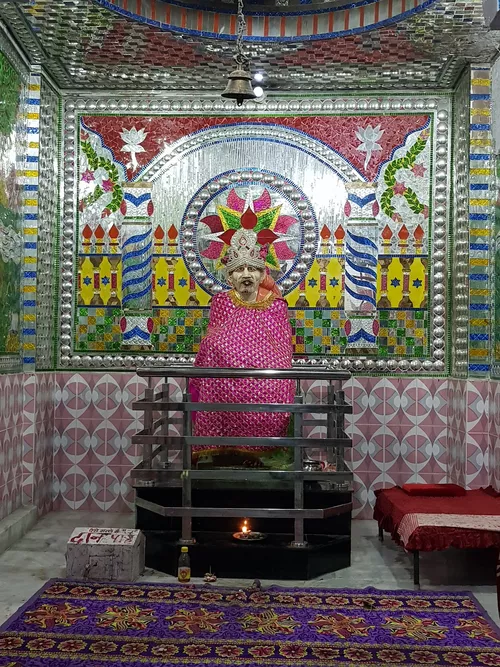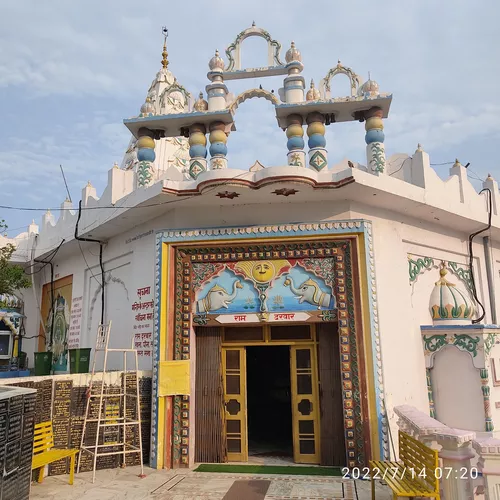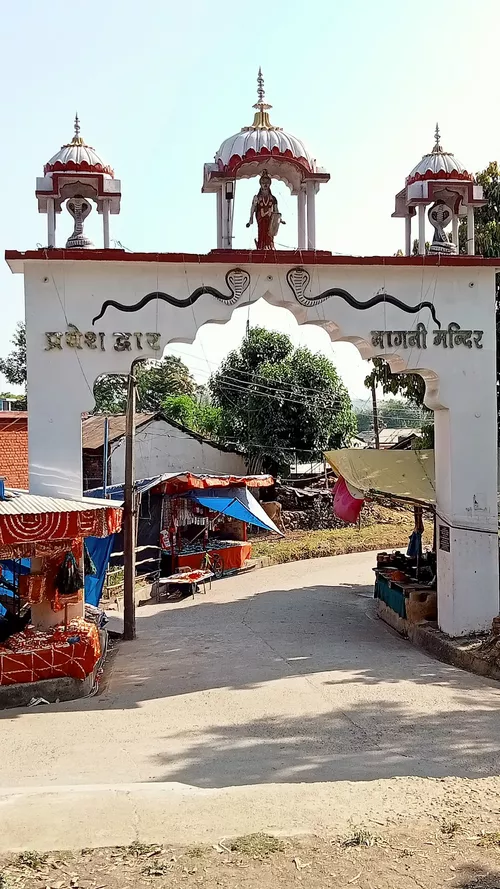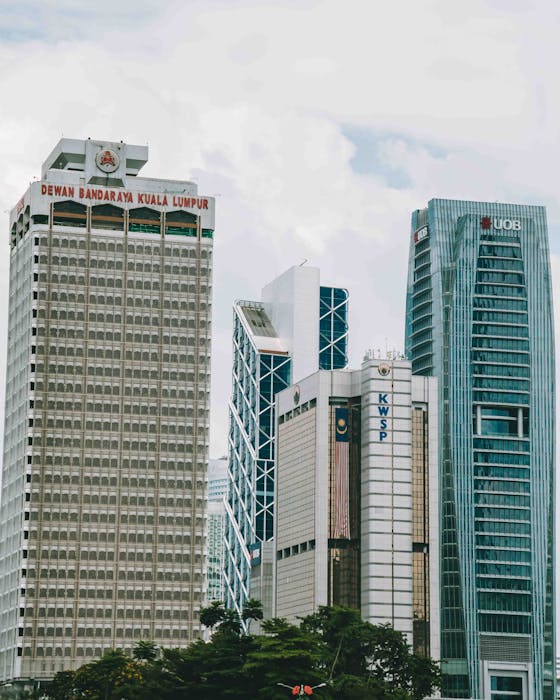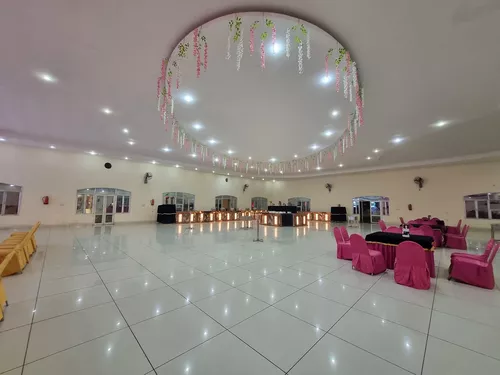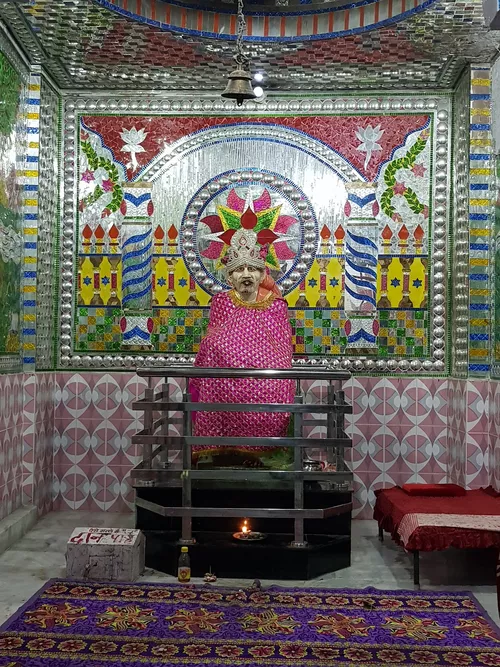Pathankot is popular for
Pathankot in next 3 month
Weather in Pathankot
December in Pathankot is cold and misty with moderate air quality, making it a good time to visit.
Usual trip duration
Explore the historical sites and natural beauty of Pathankot over a long weekend. Visit the ancient temples, take a boat ride on the Chamera Lake, and enjoy the scenic views of the Himalayas.
Very budget friendly
Ideas To Plan Your Trip
Places To Visit
Places To Eat
Frequently Asked Questions About Pathankot
The best time to visit Pathankot is during the months of October to April. The weather during this period is pleasant, with mild temperatures, making it ideal for sightseeing and outdoor activities. The summer months, from May to June, can be extremely hot, with temperatures soaring to 45°C, which may make it uncomfortable for tourists. The monsoon season, from July to September, brings heavy rainfall, which can disrupt travel plans and outdoor activities. Therefore, planning a trip during the winter or spring season ensures a more enjoyable experience.
During the winter months, Pathankot offers a refreshing escape from the scorching heat of other parts of India. The clear skies and cool breeze create a perfect ambiance for exploring the local attractions and the surrounding natural beauty. Moreover, this period coincides with several local festivals and events, providing visitors with an opportunity to immerse themselves in the rich culture and traditions of the region. For those seeking a peaceful and rejuvenating getaway, the October to April window is undoubtedly the prime time to explore Pathankot.
Pathankot, being a strategic location and a gateway to the Himalayas, is well-connected by various modes of transportation. Here's a detailed breakdown of how you can reach Pathankot:
| Mode | Details |
|---|---|
| By Air | Pathankot Airport (IXP) is a domestic airport with regular flights connecting it to Delhi and other major cities. From the airport, you can hire a taxi or take a bus to reach the city center. |
| By Train | Pathankot Junction is a major railway station, well-connected to various parts of India. Several express and superfast trains connect Pathankot to Delhi, Mumbai, Kolkata, and other major cities. Once you arrive at the station, you can easily find taxis and auto-rickshaws to reach your desired destination in the city. |
| By Road | Pathankot is well-connected by road to nearby cities and states. National Highway 44 (formerly NH1A) passes through Pathankot, making it accessible by bus and car. Regular bus services are available from Delhi, Jammu, Amritsar, and other cities. You can also hire a taxi or drive your own vehicle to Pathankot. |
Choosing the mode of transport depends on your budget, time constraints, and personal preferences. Trains are generally a comfortable and economical option, while flights offer a faster but more expensive alternative. Buses and cars provide flexibility and scenic views along the way.
Pathankot, though often considered a transit city, boasts several attractions that showcase its historical, cultural, and natural beauty. Here's a list of must-visit places in and around Pathankot:
- Nurpur Fort: A historical fort located about 25 km from Pathankot, offering glimpses into the region's rich past and architectural heritage. The fort houses ancient temples and provides panoramic views of the surrounding landscape.
- Mukteshwar Temple: A sacred shrine dedicated to Lord Shiva, situated on the banks of the Ravi River. The temple attracts devotees and tourists alike, seeking spiritual solace and tranquility.
- Ranjit Sagar Dam: A majestic dam built on the Ravi River, offering breathtaking views of the reservoir and the surrounding hills. It's a popular spot for picnics and boating.
- Shahpurkandi Fort: Another historical fort, located near the Ranjit Sagar Dam. It's known for its strategic location and offers a glimpse into the military architecture of the past.
- Kali Mata Temple: A revered Hindu temple dedicated to Goddess Kali, attracting devotees from far and wide. The temple is known for its vibrant atmosphere and religious significance.
- Hydel Project Colony Park: A well-maintained park offering recreational facilities and a peaceful environment for relaxation.
Beyond these attractions, Pathankot serves as a gateway to the scenic valleys of Himachal Pradesh and Jammu & Kashmir, making it a convenient base for exploring the Himalayas.
Pathankot provides a mix of historical, religious, and nature-based activities for tourists. Here are some popular activities you can enjoy in and around Pathankot:
- Explore Historical Sites: Visit Nurpur Fort and Shahpurkandi Fort to delve into the region's historical and architectural heritage.
- Seek Spiritual Solace: Pay a visit to Mukteshwar Temple and Kali Mata Temple to experience the religious fervor and seek blessings.
- Enjoy Nature: Take a boat ride or have a picnic at Ranjit Sagar Dam, surrounded by the breathtaking views of the reservoir and the hills.
- Trekking and Hiking: Pathankot serves as a base for trekking and hiking expeditions in the nearby Shivalik Hills and the lower Himalayas.
- Day Trips to Nearby Destinations: Plan day trips to Dalhousie, Dharamshala, and other scenic hill stations in Himachal Pradesh.
- Shopping for Local Handicrafts: Explore the local markets for traditional handicrafts, textiles, and souvenirs.
Whether you're interested in history, religion, nature, or adventure, Pathankot offers a diverse range of activities to cater to different interests.
Pathankot's strategic location makes it an ideal starting point for exploring the picturesque regions of Himachal Pradesh and Jammu & Kashmir. Here are some popular nearby destinations you can visit from Pathankot:
| Destination | Distance (approx.) | Highlights |
|---|---|---|
| Dalhousie | 80 km | Colonial-era architecture, scenic views, Khajjiar (Mini Switzerland), and Dainkund Peak. |
| Dharamshala | 90 km | Home to the Dalai Lama, Tibetan culture, monasteries, and the scenic Triund trek. |
| Amritsar | 110 km | Golden Temple, Wagah Border, Jallianwala Bagh, and rich Punjabi culture. |
| Jammu | 110 km | Raghunath Temple, Bahu Fort, Amar Mahal Museum, and the Mata Vaishno Devi pilgrimage base. |
| Palampur | 140 km | Tea gardens, pine forests, temples, and paragliding opportunities. |
These destinations offer a diverse range of experiences, from serene hill stations to culturally rich cities, making Pathankot an excellent base for exploring the region.
Pathankot offers a modest shopping experience, primarily focused on local handicrafts, textiles, and everyday items. While it may not be a shopper's paradise, you can still find some interesting items to take back home. Here are some popular shopping spots in Pathankot:
- Main Bazaar: The Main Bazaar is the heart of Pathankot's shopping scene, offering a variety of shops selling clothing, footwear, electronics, and household items.
- Gandhi Chowk: Another bustling market area where you can find a mix of shops and street vendors selling clothing, accessories, and local snacks.
- Dhar Road Market: This market is known for its collection of shops selling traditional Punjabi attire, including salwar suits, sarees, and accessories.
- Handicraft Shops: Look for shops selling local handicrafts, such as wooden artifacts, woven textiles, and embroidered items. These make for unique and memorable souvenirs.
- Malls and Shopping Centers: Pathankot also has a few modern malls and shopping centers where you can find branded clothing, footwear, and other items.
Remember to bargain while shopping in the local markets to get the best deals. Also, be sure to check the quality of the products before making a purchase.
Pathankot offers a variety of dining options, ranging from local Punjabi cuisine to North Indian dishes and international flavors. Here are some of the best restaurants and street food spots in Pathankot:
| Category | Restaurant/Spot | Cuisine |
|---|---|---|
| Restaurants | The Yellow Chilli | North Indian |
| Restaurants | Moti Mahal Delux | North Indian, Mughlai |
| Restaurants | Domino's Pizza | Pizza, Fast Food |
| Street Food | Local Dhabas near Railway Station | Punjabi, North Indian |
| Street Food | Stalls in Main Bazaar | Chaat, Gol Gappe, Samosas |
Don't miss out on trying local Punjabi dishes like butter chicken, dal makhani, and sarson da saag. For street food lovers, the Main Bazaar and the area around the railway station offer a variety of delicious and affordable options.
The type of clothing you should pack for a trip to Pathankot largely depends on the time of year you plan to visit. Here's a breakdown of what to pack for each season:
- October to April (Winter/Spring): During these months, the weather is generally pleasant and mild. Pack light woolens or sweaters, jackets, and shawls to keep you warm.
- May to June (Summer): The summer months in Pathankot can be extremely hot. Pack light, breathable cotton clothing, such as t-shirts, shorts, and loose-fitting pants. Don't forget to bring a hat, sunglasses, and sunscreen to protect yourself from the sun.
- July to September (Monsoon): The monsoon season brings heavy rainfall to Pathankot. Pack raincoats, umbrellas, and waterproof shoes to stay dry. It's also a good idea to pack clothing that dries quickly.
Regardless of the season, it's always a good idea to pack comfortable walking shoes, as you'll likely be doing a lot of sightseeing. If you plan to visit religious sites, be sure to pack modest clothing that covers your shoulders and knees.
Pathankot is a region with a blend of cultures, primarily influenced by Punjabi traditions. Being aware of certain cultural norms and etiquette can enhance your travel experience and show respect for the local customs. Here are a few points to keep in mind:
- Dress Modestly: When visiting religious sites such as temples and gurdwaras, dress modestly. Cover your shoulders and knees. In some gurdwaras, you may be required to cover your head with a scarf or bandana.
- Remove Shoes: It is customary to remove your shoes before entering a religious site or someone's home.
- Respect Elders: Show respect to elders. Addressing them with appropriate titles like 'Uncle' or 'Aunty' can be a sign of respect.
- Use Right Hand: When accepting food or giving something to someone, use your right hand. The left hand is traditionally considered unclean.
- Bargaining: Bargaining is common in local markets. However, do it respectfully and avoid being overly aggressive.
- Photography: Ask for permission before taking photos of people, especially women. Be mindful of photography restrictions in religious sites and military areas.
By being mindful of these cultural norms, you can ensure a respectful and enriching experience during your visit to Pathankot.
Pathankot offers a range of accommodation options to suit different budgets and preferences. You can find everything from budget-friendly guesthouses to comfortable hotels and resorts. Here's a brief overview of the available options:
- Budget Guesthouses: These are the most affordable options, offering basic amenities and comfortable lodging. They are ideal for backpackers and budget travelers.
- Mid-Range Hotels: Pathankot has several mid-range hotels that offer a good balance of comfort and affordability. These hotels typically have amenities like air-conditioned rooms, attached bathrooms, and in-house restaurants.
- Luxury Hotels: For those seeking a more luxurious stay, there are a few high-end hotels and resorts in and around Pathankot. These properties offer a range of amenities, including swimming pools, spas, and fine-dining restaurants.
- Homestays: Homestays are becoming increasingly popular, offering a chance to experience the local culture and hospitality. You can find homestays in Pathankot and the surrounding areas.
It's always a good idea to book your accommodation in advance, especially during peak season, to ensure availability and get the best deals.
The primary local language spoken in Pathankot is Punjabi. Hindi is also widely understood and spoken, especially in urban areas and by people involved in tourism and business. English is less commonly spoken but is understood by some people in the hospitality sector and by younger generations.
Here are some tips on how you can communicate in Pathankot:
- Learn Basic Punjabi Phrases: Learning a few basic Punjabi phrases can go a long way in showing respect and making your interactions more pleasant. Some useful phrases include: 'Sat Sri Akal' (Hello), 'Shukriya' (Thank you), 'Ji Haan' (Yes), and 'Ji Nahi' (No).
- Use Hindi: Since Hindi is widely understood, you can use Hindi to communicate with most people in Pathankot.
- English Assistance: In hotels and tourist areas, you may find people who can speak English. However, don't rely solely on English for communication.
- Translation Apps: Translation apps on your smartphone can be helpful for communicating in situations where you don't speak the local language.
- Be Patient and Polite: Even if you encounter a language barrier, be patient and polite. Gestures and a friendly attitude can often help bridge the communication gap.
By being prepared and making an effort to communicate in the local language, you can enhance your travel experience and connect with the people of Pathankot.
Pathankot, being a part of Punjab, celebrates many vibrant festivals that reflect the rich cultural heritage of the region. These festivals are marked by colorful processions, traditional music and dance, and delicious food. Here are some of the prominent festivals celebrated in Pathankot:
- Baisakhi: Celebrated in April, Baisakhi marks the beginning of the Sikh New Year and the harvest season. It is a time of great joy and festivities, with people participating in traditional dances like Bhangra and Gidda.
- Lohri: Celebrated in January, Lohri is a winter folk festival that marks the end of winter and the arrival of longer days. Bonfires are lit, and people sing and dance around the fire, throwing sesame seeds, popcorn, and sweets into the flames.
- Holi: The festival of colors, Holi, is celebrated with great enthusiasm in Pathankot. People throw colored powder and water on each other, symbolizing the victory of good over evil.
- Diwali: The festival of lights, Diwali, is celebrated with the lighting of lamps and candles, bursting of firecrackers, and exchanging of sweets and gifts.
- Guru Nanak Jayanti: This festival celebrates the birth anniversary of Guru Nanak Dev, the founder of Sikhism. Special prayers and processions are held in gurdwaras, and langar (community meals) are served to all.
Participating in these festivals can provide a unique and immersive cultural experience, allowing you to witness the traditions and customs of Pathankot firsthand.





